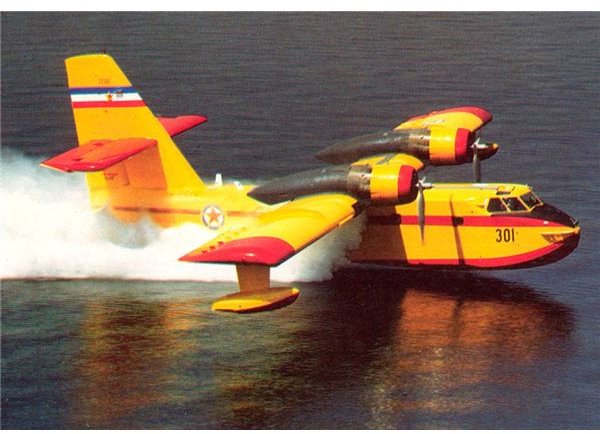Technology That Serves Mankind - Firefighting Airplanes - About, History, Examples
introduction - Firefighting From The Sky
Although airplanes that deliver smokejumpers to fires by parachute may also be considered firefighting airplanes, the common conception of airplanes that fight fires are ones that drop water, foams, gels, or fire retardants directly onto fires, and these are the ones discussed in this article. Each year, the US Forest Service, along with the Bureau of Land Management uses around 1,000 aircraft to fight fires, at an annual cost of around $250 million.
First Firefighting Airplanes
The earliest firefighting airplanes were tried out in California up to the 1950s. these involved dropping water stored in wooden beer kegs onto forest fires. The kegs were mounted on single-engine planes. But within a few years, firefighters and the US Forest Service realized the potential for fighting fires using large military aircraft left over from World War II.
Because these planes were made to haul cargo over long distances, they were well-suited for carrying water or fire retardants for the task. Both tough and maneuverable, these workhorse planes could stand the stresses required for aerial firefighting, and they could accommodate large tanks for their water or fire retardant.
Some of the World War II era planes pressed into service for fighting fires were the Boeing B-17 Flying Fortress, Fairchild C-119 Boxcars, and Grumman PBY Supercats.
Commercial aircraft have also been used as firefighting airplanes, including the Douglas DC-6 and the DC-7. Aircraft from the post-World War II era joined the firefighting forces later. These planes included C-130s and Lockheed P-3 Orions, which became some of the premiere “go to” airplanes for fighting fires.
Unique Firefighting Airplane - the CL-215
Of all the firefighting airplanes culled from various sources, only one model was built specifically for the task of aerial firefighting. The Canadair CL-215 first flew in 1967, and it was produced for 23 years afterwards. Quebec and the country of France were the first to use these planes, but they were also used by Greece, Spain, Italy, Venezuela, Thailand, and Yugoslavia. These low-flying aircraft drop 4,500 kg of water or chemicals at a time and can take off and land from airfields and water.
Modern Firefighting Airplanes
In 1999 the world saw the first flight by the Russian firefighter Beriev Be-200, also an amphibious plane. It has been in service since 2003. Fully fueled, it can fly 200 km from an airfield to a water source and make repeated trips back and forth to the fire to drop up to 310,000 kg of water before having to refuel.

The smallest firefighting airplanes are Single Engine Air Tankers, agricultural sprayers that can drop 800 gallons of retardant or water on a fire. the Airtractor AT-802F is one example of this type of plane. The biggest firefighting plane is a Boeing 747, named the Evergreen Supertanker. It can carry 24,000 gallons at a time and entered service in 2009. Already it’s been busy, starting with a fire in Cuenca, Spain, and moving on to fires in the United States.
Summary
Firefighting airplanes cover the whole spectrum, from retro-fitted World War II planes to smaller “crop duster” type planes to behemoths like Russia’s Be-200 and the Evergreen Supertanker. Without the service of these specialized aircraft, fighting wildfires would be a much more helpless and discouraging undertaking. There is no other firefighting method that can transport and drop water on anywhere near the scale these planes can.
